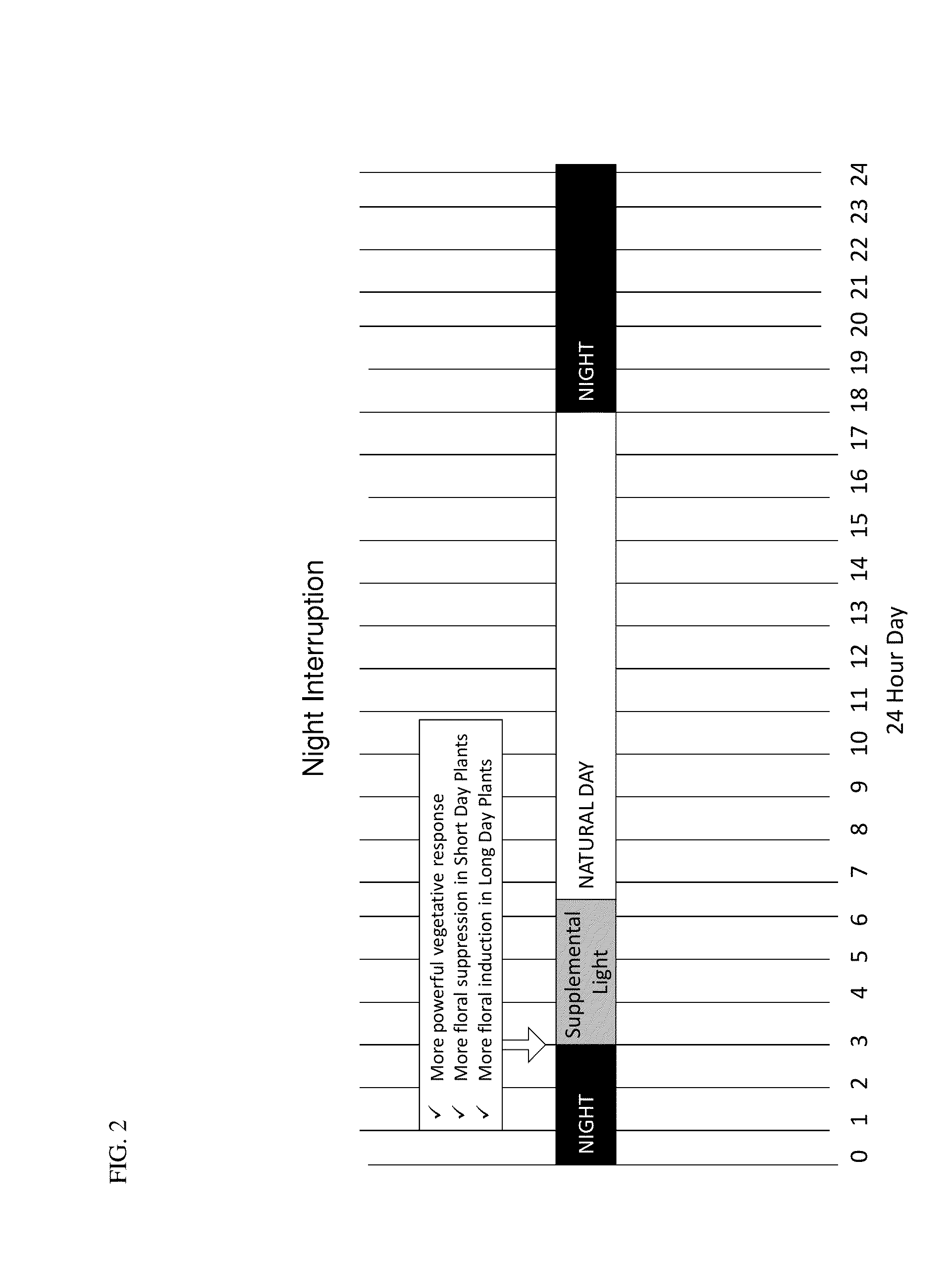Methods for modifying flowering time and seed yield in field crops
a technology of field crops and flowering time, applied in the field of methods for manipulating flowering and seed yield of plants grown in fields, to achieve the effect of increasing seed yield
- Summary
- Abstract
- Description
- Claims
- Application Information
AI Technical Summary
Benefits of technology
Problems solved by technology
Method used
Image
Examples
example 1
Full Cycle Generation Advancement
[0062]Juvenile Soy plants (V0-V4) grown in field conditions were grown under vegetative conditions to the V0-3 stage before floral induction treatment (FIG. 1.). The duration of the treatment is extended for later maturity groups to obtain a higher reproductive dosage than earlier maturity groups. In addition, the pre- and post-treatment vegetative photoperiod is customized for each maturity group to ensure the reproductive dose is persistent. After floral induction, the plants are returned to vegetative growth. The Vegetative Signal is provided by means of supplemental lights before dawn.
example 2
Night Interruption
[0063]Night interruption of soy plants was performed by way of a timer that turned on a supplemental light canopy for a certain number of hours before natural sunrise. As shown in FIG. 2, results demonstrated that night interruption of photoperiod in the field provided greater control over the vegetative response in a plant compared to extending photoperiod after sunset.
example 3
Manipulation of Yield and Cycle Length for Soybean Plants
[0064]This example describes a method for manipulating vegetative and flowering responses in soybean, a normally short day plant, with external signals for increasing seed yield and manipulating flowering time. The methods resulted in a consistent high yield phenotype and reduced cycle time. Three factors were manipulated in order to a correct balance of opposing vegetative and reproductive pathways: (1) Strength and persistence of initial reproductive dose (the floral induction treatment); (2) Strength of the non-induction (vegetative) signal after initiations of flowering; and (3) Relative maturity of the soybean germplasm.
[0065]Breeding facilities in southern latitudes were used for the following experiments, where the natural photoperiod causes early flowering in most maturity groups. Night length in these locations ranges from 10 hours to 14 hours throughout the season. Soy plants are entrained to the naturally short days...
PUM
 Login to View More
Login to View More Abstract
Description
Claims
Application Information
 Login to View More
Login to View More - R&D
- Intellectual Property
- Life Sciences
- Materials
- Tech Scout
- Unparalleled Data Quality
- Higher Quality Content
- 60% Fewer Hallucinations
Browse by: Latest US Patents, China's latest patents, Technical Efficacy Thesaurus, Application Domain, Technology Topic, Popular Technical Reports.
© 2025 PatSnap. All rights reserved.Legal|Privacy policy|Modern Slavery Act Transparency Statement|Sitemap|About US| Contact US: help@patsnap.com



